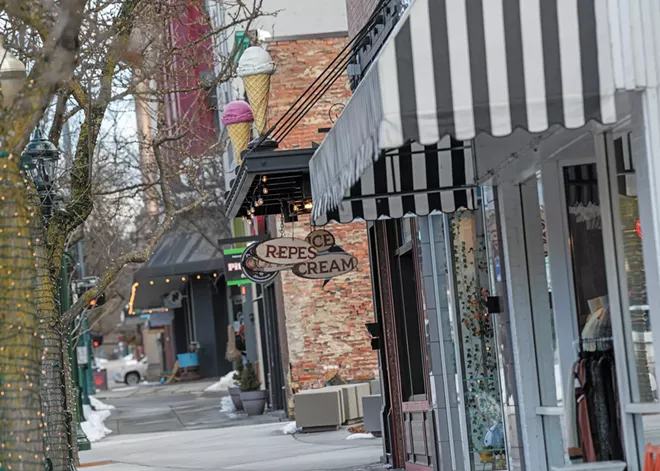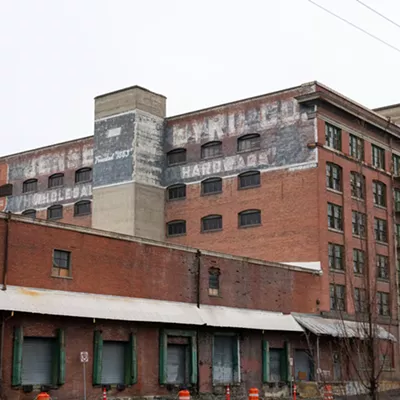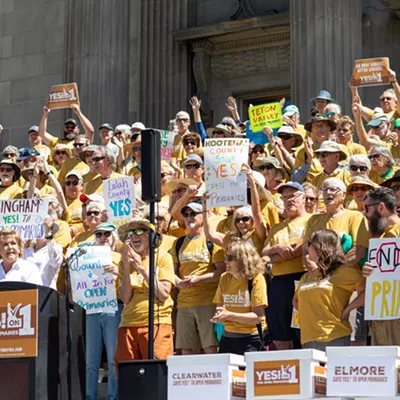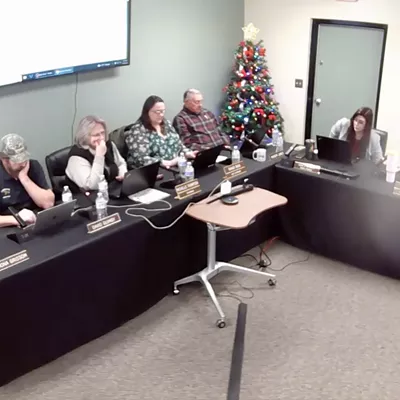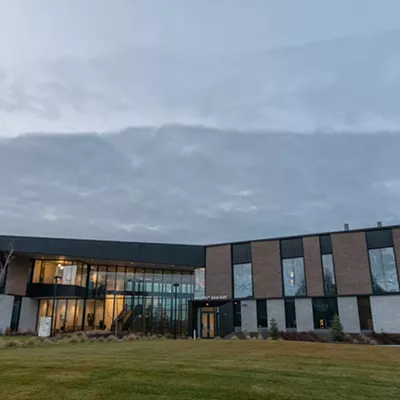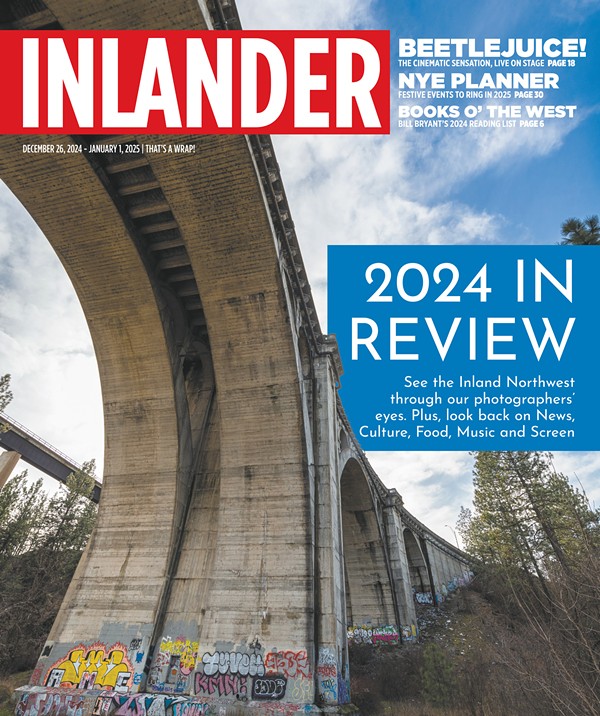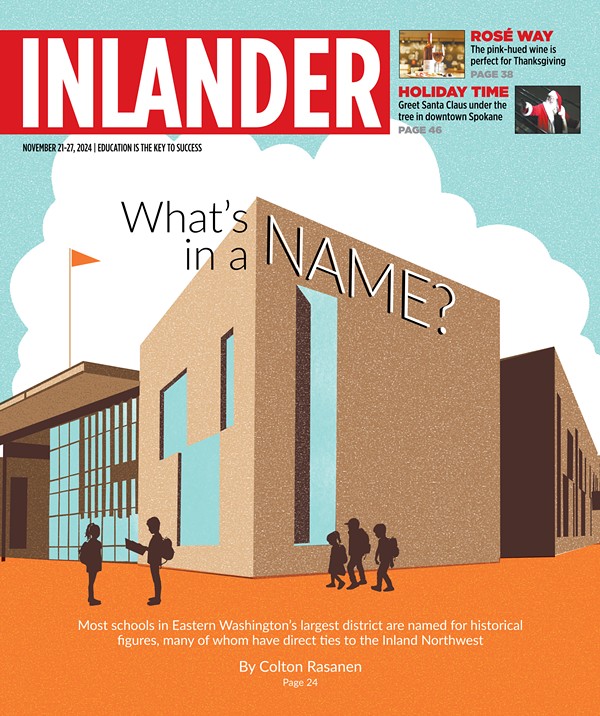For the last decade, people have been moving to Idaho at breakneck speeds. But from overcrowded schools to sky-high living costs, one of the nation's least-populated states has been struggling to keep up with the influx.
Take Coeur d'Alene for example. The city's school district has three middle schools, two of which are nearing capacity and another is already at capacity, according to Jeff Voeller, Coeur d'Alene Public Schools director of operations. And the median cost of renting a one-bedroom property in Coeur d'Alene ($1,625) is closer to Seattle's ($1,775) than places like Boise ($1,351) or Spokane ($1,000), according to Zillow.
Between 2010 and 2020, Idaho's population grew by about 17% — the second-fastest growth in the nation behind Utah — according to the U.S. Census Bureau. Coeur d'Alene alone saw a jump of more than 20% in the same time.
But where do all those new Idahoans live? Cookie cutter, car-oriented suburban sprawl may be the order of the day, but at least one North Idaho development company is trying something a little different. Coeur Terre — a Kootenai County Land Co. project that hopes to transform 1,050 acres of rural land in the city's southwest corner into a new community — plans to build close to 3,000 new housing units (single-family homes, townhomes and apartments), commercial shops and two new schools, all while maintaining space for parks and incorporating trails for biking and walking throughout, including a connection with the Centennial Trail.
Development has been in the works since about 2019, when the land — just north of I-90 and directly east of North Huetter Road — was acquired. But just last week, the Coeur d'Alene School Board took a crucial step forward, unanimously approving the purchase of a 20-acre plot of land in the development's northeast corner to build a new middle school.
The school district's Voeller, who has been working with the developers for three years, says that this will set the district up to better handle the region's growth. It's also the first time in more than three decades that a developer has come to the district and asked about their specific needs, he adds.
"At first they were planning to just dedicate a 10-acre plot of land for us to build a new elementary school," he says. "But what we really needed was a new middle school."
So now, the school district will be able to build both.
The district bought the land from the development company for about $4.36 million, which was more than $200,000 less than the land was appraised for. The district sold 10 acres of soccer fields behind Hayden Meadows Elementary and the old Hayden Lake School to finance the purchase.
However, as part of the purchase agreement, Coeur Terre developers will be on the line for the necessary infrastructure like roads and sewer and water connections before any construction can start. This, however, does not include the cost of the schools' construction, which Voeller says will come in the form of a future bond (which has yet to be planned).
Coeur Terre developers anticipate that the entire community will be built in stages over the next 20 to 30 years. A timeline for building the two schools is unclear, according to Voeller.
As North Idaho officials continue to address the issues that come with a rapidly growing population, many citizens are sending mixed messages.
Some of the harshest critics of the Coeur Terre development are folks in the adjacent Indian Meadows neighborhood — many of whom are against the development because of anticipated impacts of its proposed density. Yet in November, Kootenai County voters rejected a $50 million bond that would've preserved open space around the county instead of being used for development.
Coeur d'Alene City Council member Dan Gookin says it's hard to find an adequate answer to address the region's growth. So when the decision to annex more than 400 acres of the Coeur Terre development into the city came before the City Council in March, Gookin, along with Council member Christie Wood, voted against it.
Much of Gookin's opposition stems from the objections from the adjacent neighborhood, but he also believes that the city should focus on building up instead of building out.
"I think it's going to destroy the neighborhood," Gookin says. "It'll destroy the life of these folks who are more used to their rural lifestyles."
The rest of the council voted in favor of the annexation, meaning that the land became part of the city and can now be used to build the proposed housing with a higher-density than surrounding neighborhoods.
Coeur d'Alene Senior Planner Sean Holm thinks this development, while not appealing to its neighbors, is a smart path forward for the city to address growth in a meaningful way.
"There's not much opportunity for development in Coeur d'Alene," Holm explains.
With the Spokane River and Lake Coeur d'Alene to the south, Coeur d'Alene National Forest to the east, and Post Falls and Hayden bordering the city to the north and west, he says there's not really any space to build out in the city right now.
"There are very few 20-acre parcels in the city that we could have even built a middle school on," Voeller says, echoing Holm's assessment.
At this point, Coeur Terre developers have successfully jumped through many of the logistical hurdles involved in a development like this, but Holm believes the main challenge is yet to come.
"I think the wildcard in all of this will probably be the state," he says. "There have been plans for a Huetter Road bypass to help alleviate some of the traffic, but [the state] may be going back to the drawing board with the Coeur Terre development in mind." ♦

